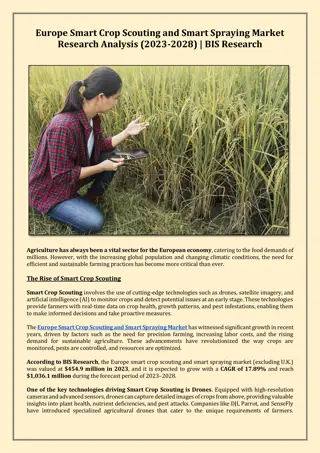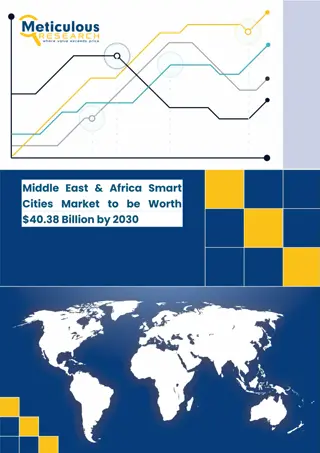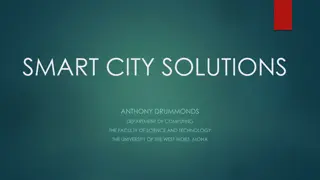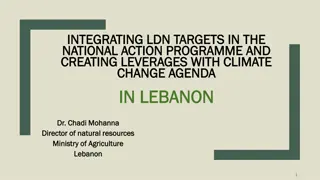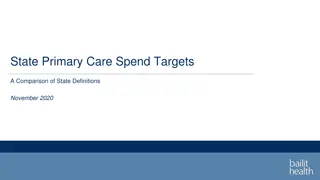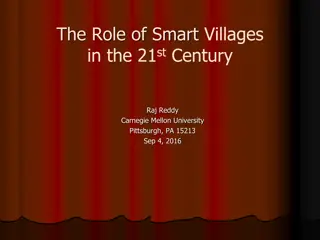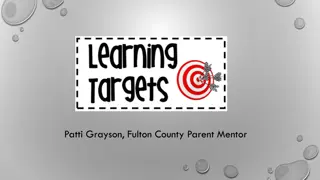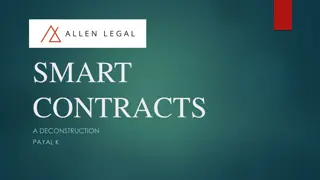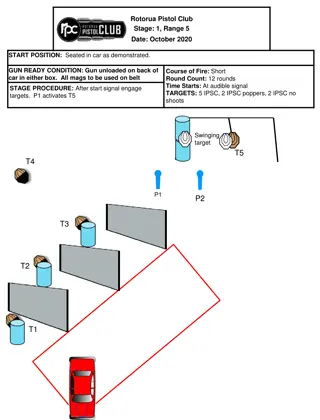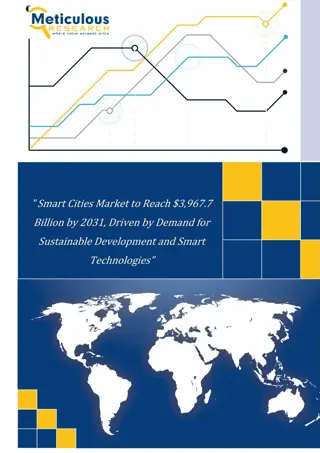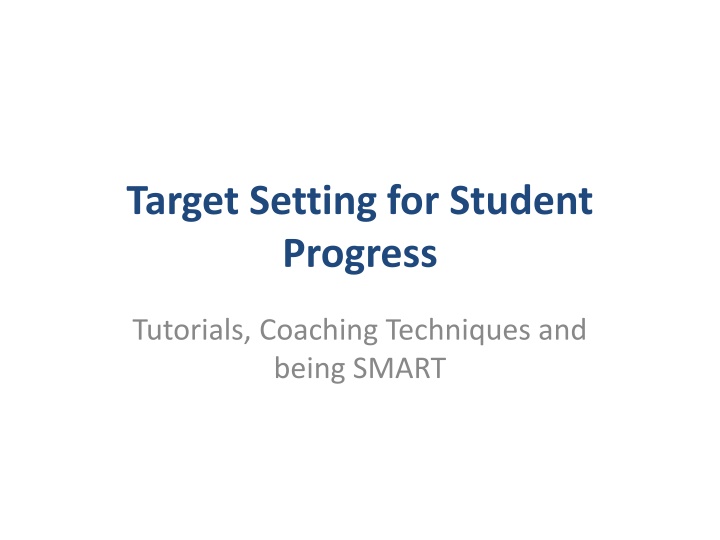
Effective Strategies for Setting SMART Targets in Student Progress
Enhance student progress through targeted tutorials, coaching techniques, and SMART goal-setting. Learn techniques for pre-assessment, setting targets for learners, measuring progress, and more to support individual needs and long-term goals effectively.
Download Presentation

Please find below an Image/Link to download the presentation.
The content on the website is provided AS IS for your information and personal use only. It may not be sold, licensed, or shared on other websites without obtaining consent from the author. If you encounter any issues during the download, it is possible that the publisher has removed the file from their server.
You are allowed to download the files provided on this website for personal or commercial use, subject to the condition that they are used lawfully. All files are the property of their respective owners.
The content on the website is provided AS IS for your information and personal use only. It may not be sold, licensed, or shared on other websites without obtaining consent from the author.
E N D
Presentation Transcript
Target Setting for Student Progress Tutorials, Coaching Techniques and being SMART
Starting Points How do we know these? What do we assume? Some techniques for pre-assessment: One minute paper Concept maps Knowledge grids Self assessment Observation Know, Want, Learnt KASH Knowledge, Attitude, Skills and Habits
Setting Targets for Learners What? How? Why? When? Identifying individual needs and aims Specific to the learners ambitions in the short and long term Measurable in relation to time scale agreed and progress made Tutorial one to one or group Peer mentoring Recorded SMART targets on Etracker updated regularly Increase motivation through a long term aim Increase learner focus on learning and development Challenge learners to take responsibility and leadership qualities Start of the course Progression weeks Start of the week Start of the lesson
Setting Targets for Learners Long term goals for motivation: Agree a clear long term vision Set Develop a support structure Identify key milestones specific short term targets When the long term vision has been identified, leaners can begin to set themselves short and medium term targets that help them to progress and understand what success looks like
Measuring Progress Measuring the amount of progress made by each individual in relation to their starting point. For progress to be measured it is essential to first identify what the individuals know before the learning started. For progress to be meaningful and valuable to the learner it must be recorded Ofsted 2014
Setting Targets for Learners We all know targets should be SMART Specific task Measurement Achievable (but challenging) Relevant and realistic Time scale I will be able to The outcome will be (i.e. what will have changed?) What will I have to do? How can you make sure you are on track? By next lesson I will have completed Who/what can support me? By next Wednesday Linked to long term goals By the 31st March How will you know? What will I have research? Addresses a need What s my plan?
An outcome means: what will be different? Knowledge and Understanding Attitudes and Values Knowing more about something or deepening understanding Confidence and self-esteem Attitudes to others, individuals or organisations (libraries, work, teachers) Learning facts or information Attitudes to learning, or own capacity to learn or a subject (e.g. fear of maths) Making links and relationships between things Feelings: perseverance, motivation Enjoyment, inspiration, creativity Having fun, being innovative, creative, exploring, experimenting, making Activity, Behaviour and Progession What people do, intend to do Changed activities (esp outside classroom) Being inspired Skills Academic thinking, research, problem solving, logic / physical/ communication/ social etc. Explicitly relate back to these targets in your teaching and discussion of learning. Make them integral to your planning.
Examples I will know x more words in another language (knowledge and understanding) I will know 2 strategies for multiplication (skills) I will know 3 different methods of shading (skills) I will be able to explain appropriate rules for behaviour (understanding) I can explain 3 things important about learning through play (knowledge and understanding) I will be able to demonstrate key listening skills (eye contact, body language) (skills) I will have worked on a task with 3 members of my group I don t usually sit with (or specifically ) (Behaviour) I will have designed my own necklace using 3 techniques I have learned (creativity)
Challenging Assumptions and Perceptions Values and Beliefs These are often embedded in someone s core and therefore very difficult to change. We form these values based on our prior experience and we often seek out others who will affirm them for us through their behaviour. Behaviour Experience Has an experience had a positive or negative affect on behaviour? What has happened before? What do we know to be true? Is all behaviour learnt or is some inherent to us? People link certain events and people to the way they believe they should behave. Successful people are able to adapt their behaviour to suit particular situations and people. By encouraging people to have new experiences you are more likely to be able to challenge negative beliefs.
Coaching Frameworks - iSTRIDE Information gathering Determining issues, goals, confidence levels and finding relevant evidence Strengths Paying attention to the learners strengths and maintaining them in a can-do mindset Target/Goal Setting Identifying the target to be achieved and exploring the motivation to achieve it Resources/Reality Exploring the current situation in relation to the target and identifying limiting beliefs Ideas/Strategies Seeking ideas that might help achieve the desired target and overcome limiting beliefs Decisions Selecting the most appropriate option from the ideas generated and rehearsing success Evaluation 1. Evaluating the solution now i.e. exploring the commitment to agree decisions 2. Evaluating later i.e. agreeing a time to follow up on the actions taken arising from the decision
Why use coaching models for questioning? Puts the emphasis of ownership and action on them not you Encourages development of skills to solve their own problems Tackling under performance Embeds stretch and challenge Encourages self reflection Increases confidence and ability to make changes
Targets for Aspirational Goals Key areas of focus for student progression in study programmes: Course specific induction and target grades Work experience English and maths Personal development behaviour, study skills, responsibility, time management, at risk, etc. **Captured on E-tracker and Group profile**
Pick a question for planning What type of questions will I use with my challenging students? What type of questions will I use to push and motivate the most able students? How can I promote English and maths to unwilling/disengaged students? What is the most important thing when coaching students? How will I ensure every student has an aspirational goal? How will I get students to take ownership of their targets?




